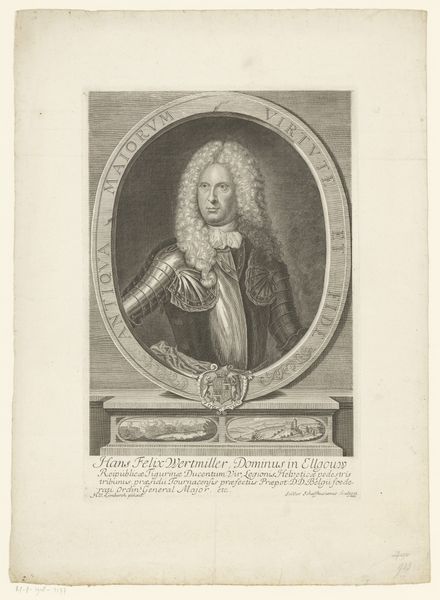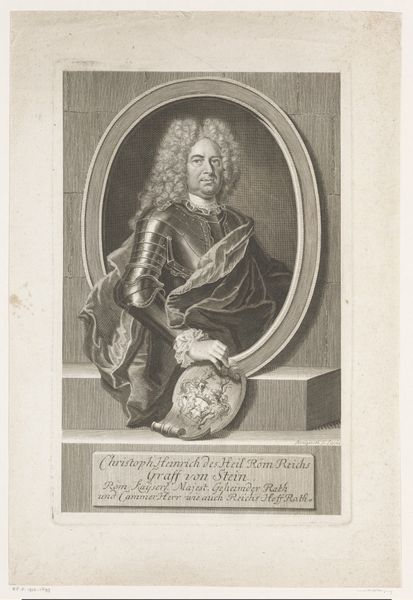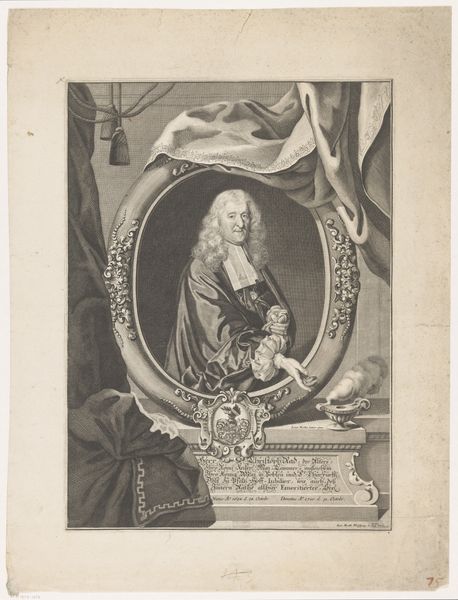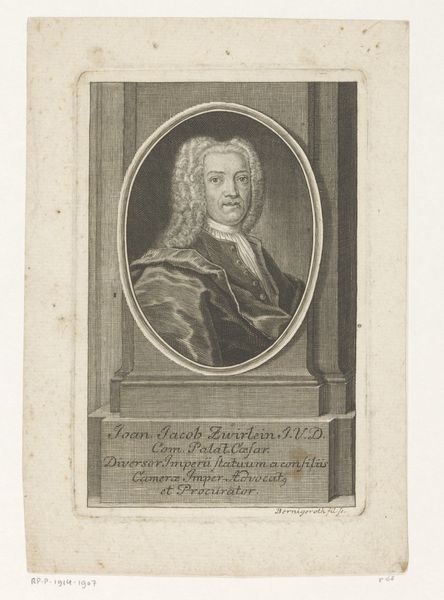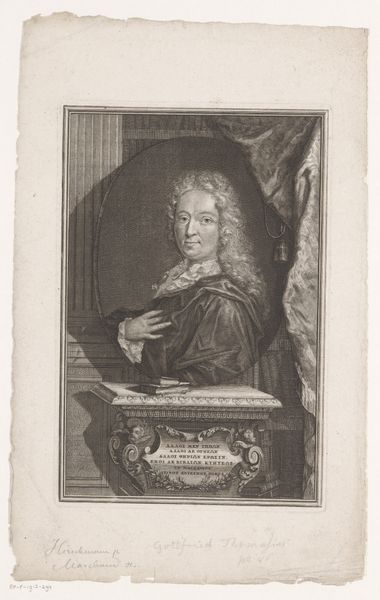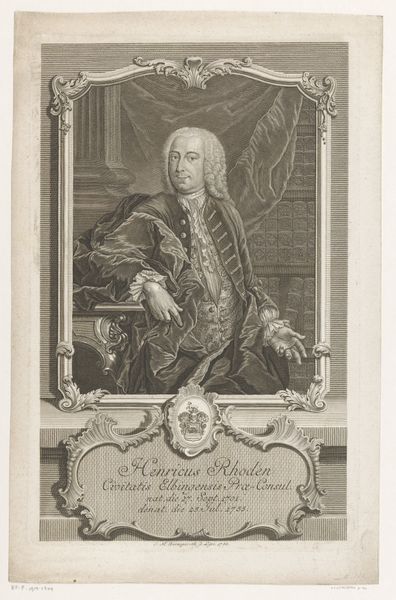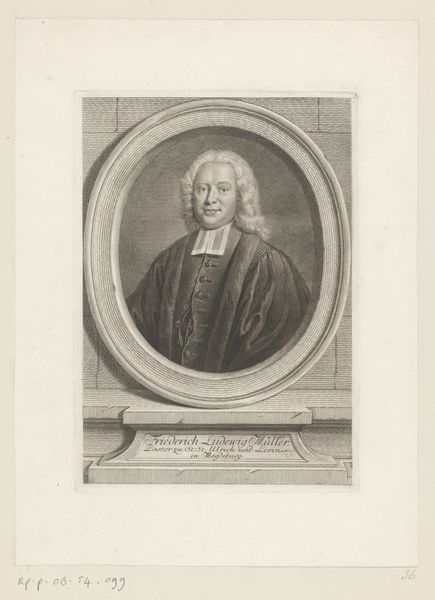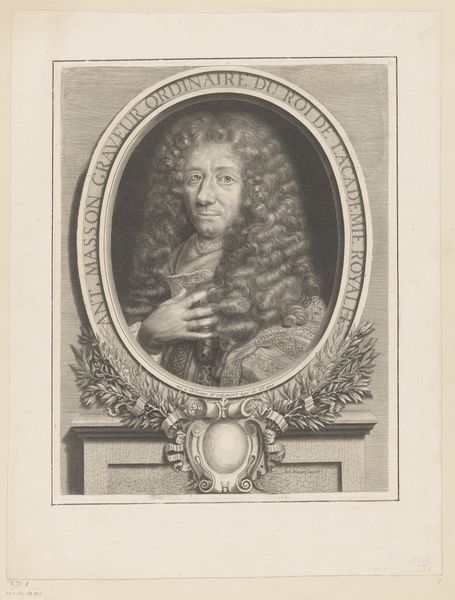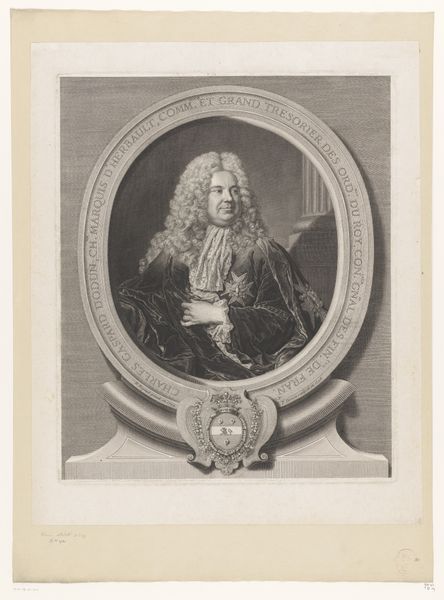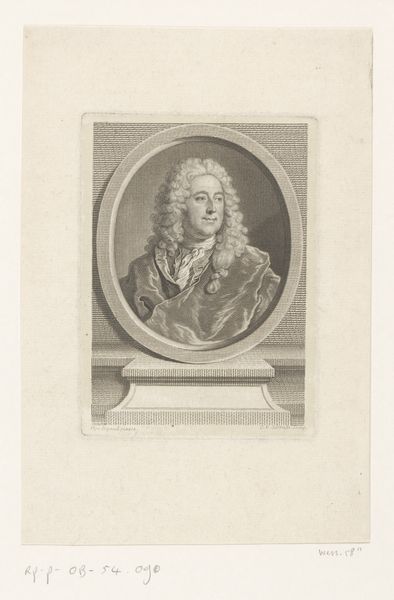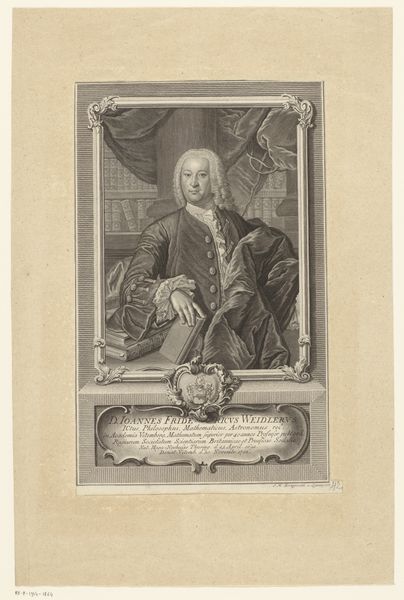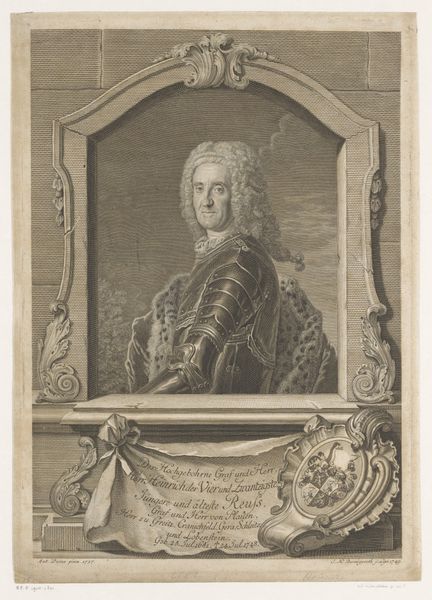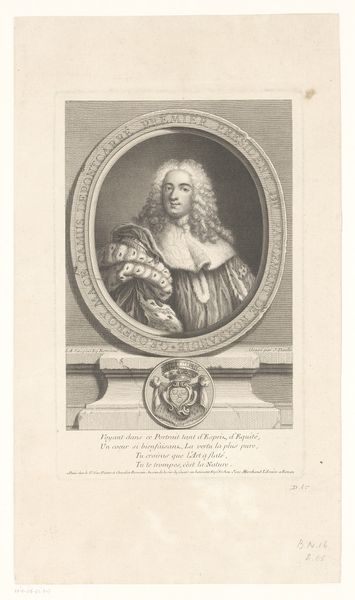
print, engraving
#
portrait
#
baroque
# print
#
history-painting
#
engraving
Dimensions: height 459 mm, width 346 mm
Copyright: Rijks Museum: Open Domain
Editor: This is "Portrait of Jean de Boullongne," an engraving by Johann Georg Wille, created in 1758. I’m immediately struck by how the artist managed to convey so much texture and detail using only lines. What aspects of its composition particularly stand out to you? Curator: Note the strategic placement of the figure within a carefully constructed framework. Observe how the window-like structure encloses and presents the subject, setting up visual tension, then the cascade of fabric and wig. Could that juxtaposition amplify the subject's presence and status? Editor: It definitely draws attention to him! The way the light and shadow play across his robe, giving it volume and weight... Curator: Exactly. It’s not merely representational, but performative. Consider the engraver’s mark-making: the varying line weights and densities across the surface of the image serve to define form and texture. Do you perceive any particular aesthetic effect produced through such manipulation? Editor: The dark areas, like behind his head, really make the lighter areas pop, like his face and wig. Is it a trick to lead our eyes? Curator: A tool of direction. Ask yourself what are the core components and their structured relation? Does each decision regarding the engravings enhance the final aesthetic experience? Editor: That’s a good point. The engraving style almost gives it a sense of controlled chaos. I'll pay attention to how artists use these little 'tricks' moving forward! Curator: Indeed. A richer understanding begins to materialise when careful assessment is considered.
Comments
No comments
Be the first to comment and join the conversation on the ultimate creative platform.
